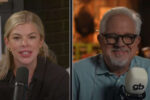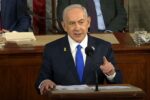Indian leaders shared their cultural heritage during a June conference in Missouri
A four-day conference in June brought together charismatic American Indians from different tribes to achieve greater unity among Native American churches, wider acceptance by the church at large and appreciation of cultural traditions in a Christian format.
Mel Bond, 51, pastor of Agape Word Center in Wentzville, Mo., invited disparate Indian leaders to a “God Loves First Nations People” gathering that allowed his predominantly white congregation to learn from and to support a people they don’t really know.
Bond, who is one-quarter Indian, has conducted evangelistic meetings among Lakota Indians in South Dakota. “Native Americans have been told for years that their regalia and dancing is of the devil,” Bond said. “No wonder there are so few who feel welcome in church. We want to let Indians know they are precious and useable by God.”
Navajo Indian Ellson Bennett, pastor of Dine Family Outreach Center in Kayenta, Ariz., explained that Indian customs aren’t necessarily pagan. “We dance for joy and strength,” Bennett said. “The eagle feather reminds us of our covenant with God.”
Bond allowed the American Indian visitors to boast of their heritage, displaying feathers and beads, banging a drum in worship and serving buffalo burgers for lunch. Speakers made it clear that being a Christian is their first calling.
“Jesus is our only example,” said Barry Belindo, 38, a Kiowa Indian who pastors an independent church in Mountain View, Okla.
“There are aspects of the culture that are God-given,” said Kyle Taylor, 43, a Pawnee who is pastor of Liberty Faith Center in Tulsa, Okla. Taylor said only about 4 percent of American Indians are born-again, in part because of how Christianity
historically has been presented.
“Many of the early missionaries came and tried to make us white people,” said Marrles Moore, 79, founder of Christian Life Fellowship in Mission, S.D. “They determined we were civilized if we wore a tie and ate with utensils.”
White people, who had labeled Indians “savages” and “heathen,” drove them off their land and killed their family members, then came with the gospel. Often they insisted that their hymns be sung and that Indians cut their braids in order to be “acceptable” to God. The federal government broke hundreds of treaties with various tribes.
“Today we’re still trying to deal with the damage,” said Belindo, who became a Christian while in an Oklahoma penitentiary. He struggled with poverty, alcohol abuse and homelessness, a way of life that continues to be the case with a disproportionate number of Indians. For many Natives, the “damage” Belindo notes started early in life.
Moore remembers a Bureau of Indian Affairs official removing him from his mother’s arms as a screaming 4-year-old in 1926 to attend a government school. He didn’t see her again for 10 months. In the English-only classroom, teachers prohibited him from talking in his native Lakota tongue.
By maintaining regulations on reservations, the government has kept Indians distrustful, Moore said. “We’re still isolated, and we shouldn’t be,” Moore said.
“A lot of people grow up in hopelessness on the reservation,” said Glen Oldlodge, 40, one of the six members of a Rosebud tribe who performed music at the conference. “Our reservation is like a Third World country.” The band has played at church functions for 11 years, although the members played in bar bands before they converted to Christianity.
Taylor noted that almost 80 percent of Indians now live in urban areas. But the same problems of rural reservations–joblessness, drug dependency, suicide–have followed them.
Indians often are more effective in spreading the Word because of what they’ve been through. “Bingo parlors and bars are prime places to evangelize,” Belindo said.
Moore said many Pentecostals have asked how they can help. When he tells them he needs full-time workers to devote two years to assisting in a Christian school, they say they will pray about it, and he never hears from them again.
Ultimately, the conference showed how Indians and whites could be true to their cultures yet worship the same God. “We’re God’s people–red, yellow, black and white,” Taylor said. “When we rise up together we can make a difference.”
–John W. Kennedy





Leave a Comment
You must be logged in to post a comment.